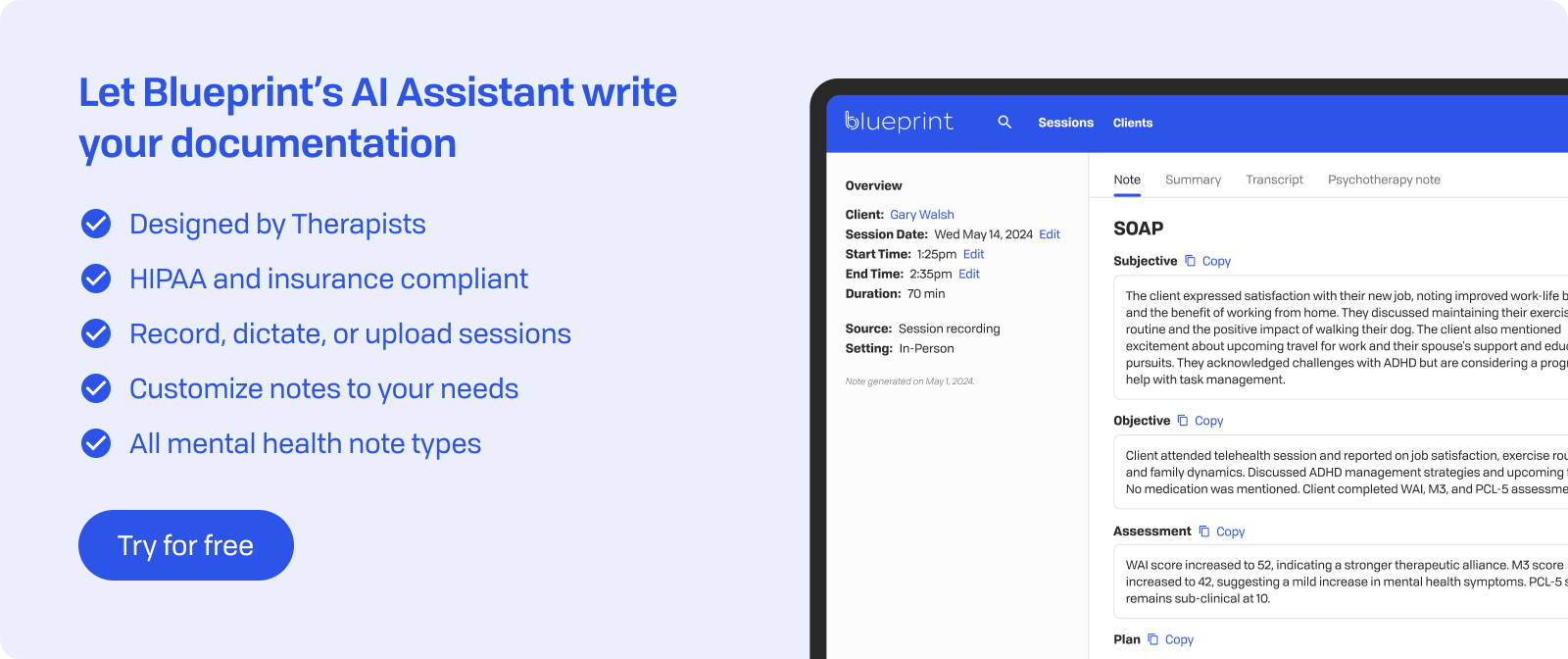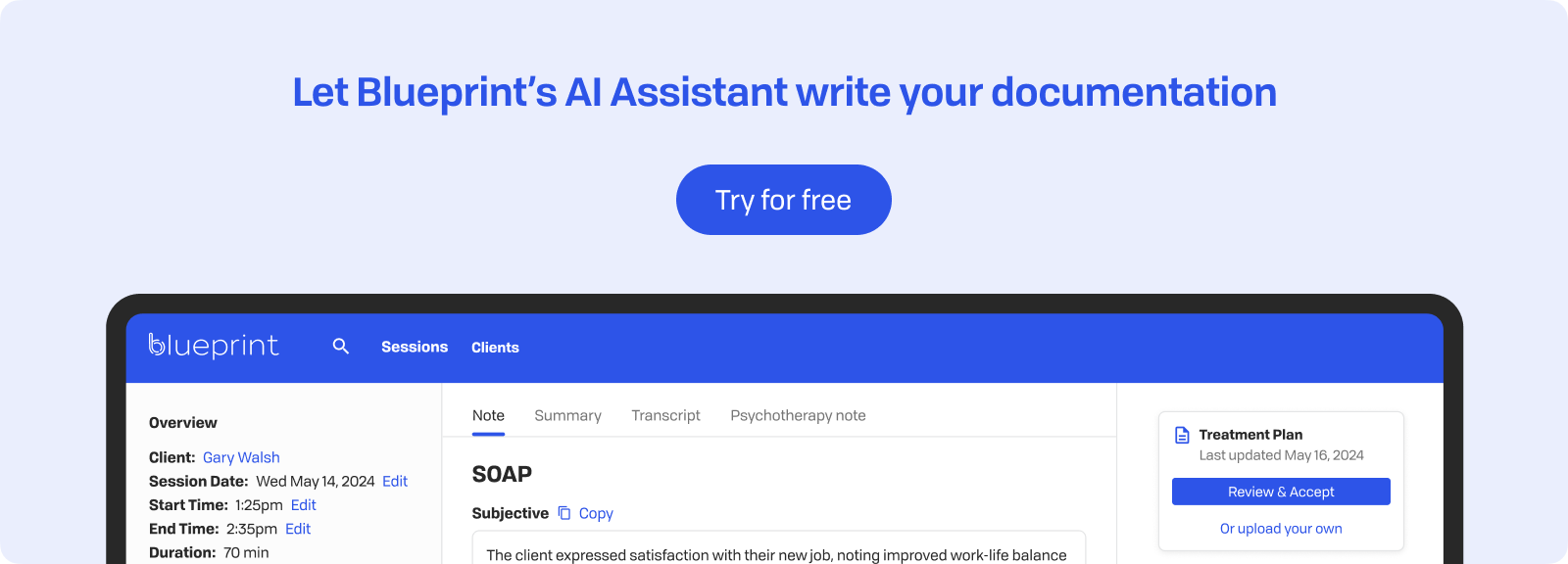In Brief
Marketing yourself as a therapist might feel uncomfortable at first, especially if you entered this field to help people rather than promote yourself. Yet in a competitive landscape, even the most skilled clinicians need visibility to reach the clients who need their expertise most. The good news is that authentic marketing aligns perfectly with therapeutic values of connection, understanding, and service.
Think of marketing not as selling, but as extending your therapeutic identity into the world. It's about sharing your approach, values, and unique strengths in ways that resonate with potential clients seeking help. When done thoughtfully, marketing is about helping people find the right therapeutic match for their needs.
This article offers actionable strategies to boost your visibility and credibility without compromising your professional integrity. You'll learn how to articulate what makes you unique, build meaningful connections, and create a sustainable marketing approach that feels authentic to who you are as a clinician.
Defining Your Unique Value Proposition (UVP)
Your unique value proposition forms the foundation of all your marketing efforts. It clearly and compellingly answers why clients should choose you as the best fit for them as a therapist. Start by reflecting on what genuinely excites you in your practice; which populations engage you the most, which presenting concerns you feel passionate about addressing, and which therapeutic modalities feel most natural to you.
Consider your professional journey and personal experiences that shape your therapeutic approach. Maybe you focus on EMDR for first responders because of your military background. Perhaps your own experience with postpartum depression drives your passion for supporting new mothers. These authentic connections between your life experience and clinical focus create powerful differentiators.
Once you identify your core strengths and passions, articulate them in language your ideal clients would use. If you work with anxious tech professionals, avoid clinical jargon in favor of phrases like "overwhelmed by impossible deadlines" or "burnt out from constant connectivity." Your UVP should immediately resonate with someone scrolling through therapist profiles at 11 PM, tiredly seeking help.
Your ideal client profile goes beyond demographics to include their specific struggles, values, and what they're seeking in therapy. A therapist specializing in religious trauma might define their ideal client as someone questioning their faith while grieving the loss of their spiritual community. This specificity helps you craft messaging that speaks directly to their experience, making them feel seen and understood before they even contact you.
Every piece of your marketing, from your Psychology Today profile to your website bio to your social media presence, should reflect this UVP consistently. When a potential client encounters your marketing materials, they should immediately understand not just what you do, but who you serve and why you're uniquely equipped to help them. This clarity builds trust and attracts clients who are genuinely good fits for your practice.

Building a Cohesive Online Presence
Your online presence acts as the digital front door to your practice, often being the first impression potential clients have of you. A professional website serves as your home base, while directory profiles help you reach clients actively searching for help.
Begin with a website that immediately conveys warmth and professionalism. Key elements include:
- Prominent contact information: Display your phone number, email, and location at the top of every page, with clickable phone numbers for mobile users.
- Clear specialization statements: Use bullet points to list the specific issues you address, avoiding overwhelming visitors with exhaustive lists.
- Professional headshot: Include a warm, approachable photo that helps clients feel connected to you before meeting.
- Simple navigation: Organize content logically with a clean menu structure that works seamlessly on all devices.
Write in accessible, client-friendly language that avoids clinical jargon. Instead of "treating major depressive disorder," consider "helping you find relief from persistent sadness and hopelessness." Your tone should be conversational yet professional. Imagine speaking to a non-therapist friend who's seeking guidance.
Directory profiles on platforms like Psychology Today need the same attention to detail. Reflect your website's messaging while adapting to each platform's format. Ensure consistency across all profiles in your specialties, approach, and contact information.
Focus on mobile-friendly design, as many clients search for therapists during moments of distress on their phones. Test your website and profiles on various devices, ensuring appointment booking and contact forms work seamlessly. Remove any barriers between a potential client's decision to reach out and their ability to connect with you.
Creating Content That Resonates
Content creation offers therapists a meaningful way to demonstrate expertise while building trust with potential clients before they ever book a session. The key is sharing valuable insights that showcase your therapeutic approach without turning your platform into a clinical textbook.
Consider these content formats that work well for therapists:
- Blog posts: Write about common challenges your ideal clients face, like "5 Ways Perfectionism Shows Up in Relationships" or "Understanding Your Anxiety Triggers During Career Transitions."
- Video snippets: Create 2-3 minute videos explaining therapy concepts or offering quick coping strategies—perfect for social media sharing.
- Downloadable resources: Develop worksheets, self-assessment tools, or guided meditation scripts that provide immediate value.
- Email newsletters: Share monthly insights, seasonal mental health tips, or reflections on current events through a therapeutic lens.
Let your unique therapeutic voice shine in every piece of content. If you use humor in sessions, let that warmth come through in your writing. If you're known for direct, no-nonsense guidance, maintain that authentic tone in your videos.
Draw inspiration from real clinical patterns you observe without ever revealing client details. You might notice many clients struggling with boundary-setting during the holidays, inspiring a timely article on "Protecting Your Peace During Family Gatherings."
Consistency matters more than perfection. Publishing one thoughtful blog post monthly builds more trust than sporadic bursts of content. Focus on topics that genuinely excite you—your passion will connect with readers who need exactly what you offer.

Using Social and Professional Networks
Social media platforms provide valuable chances to share your expertise and connect with potential clients where they already spend time. Each platform plays a distinct role in your marketing strategy:
- LinkedIn: Ideal for professional networking, sharing insightful articles, and connecting with referral sources like physicians or HR professionals.
- Instagram: Suited for visual content such as infographics about mental health, behind-the-scenes looks at your practice space, or carousel posts explaining complex concepts.
- Facebook: Excellent for building community through groups, hosting live Q&As, and sharing longer-form content that encourages meaningful discussions.
Prioritize meaningful engagement over frequent posting. A thoughtful weekly post that addresses your ideal clients' challenges can create more impact than daily generic content. Consider hosting monthly live sessions where you answer general mental health questions or discuss seasonal challenges like holiday stress or back-to-school anxiety.
Building referral relationships requires strategic outreach beyond social media. Identify professionals who serve your ideal clients—primary care physicians for anxiety specialists, school counselors for child therapists, or HR departments for workplace wellness experts. Reach out with specific ways you can support their clients, offering resources or brief consultations that demonstrate your value. For additional strategies, see how to get referrals.
Speaking engagements significantly increase your visibility. Start small with local community centers or libraries, then expand to professional conferences or webinar series. Each presentation positions you as an expert while allowing potential clients to experience your therapeutic style before committing to therapy. Document these engagements on social media to extend their reach and build credibility with your online audience.

Gathering Client Feedback and Testimonials Ethically
Client testimonials offer compelling social proof that helps potential clients imagine their own healing journey. However, collecting and using feedback requires careful attention to legal and ethical boundaries and professional standards.
The most important consideration is obtaining explicit, written consent before sharing any client feedback. This step protects confidentiality and ensures HIPAA compliance. Avoid soliciting testimonials from current clients, as this creates an inherent power imbalance and potential ethical conflict. Instead, consider reaching out to former clients who have completed treatment, allowing them distance to reflect honestly on their experience.
Effective methods for collecting ethical feedback include:
- Post-treatment surveys: Send brief questionnaires 3-6 months after treatment ends, asking about their overall experience and growth.
- Optional testimonial prompts: Include voluntary questions like "What would you tell someone considering therapy?" with clear opt-in consent.
- Anonymized quotes: Request permission to share specific insights without any identifying information.
- Professional endorsements: Seek testimonials from colleagues or referral partners about your clinical approach.
When using testimonials, maintain transparency about how they'll be used. Allow clients to review and approve their statements before publication. Present all feedback honestly without editing for impact or making unrealistic promises about outcomes.
Create a clear written policy about testimonials that you share during intake. This policy should outline your approach to feedback collection, emphasizing voluntary participation without pressure or incentives. Remember that testimonials should inform rather than guarantee—they're glimpses into the therapeutic process, not promises of specific results.
Tracking Results and Adapting Your Strategy
Effective marketing involves constant evaluation and adjustment. Without tracking results, you're essentially guessing at what connects with potential clients or where to focus your limited time and energy.
Begin by monitoring these key indicators:
- Website analytics: Keep an eye on monthly visitors, time spent on pages, and which pages lead to contact form submissions.
- Inquiry sources: During intake, ask every new client how they found you—was it your profile on Psychology Today, a Google search, or that blog post about perfectionism?
- Conversion rates: Calculate the percentage of inquiries that turn into scheduled sessions to spot any issues in your intake process.
- Content engagement: Observe which blog topics generate the most comments, shares, or direct inquiries.
- Social media metrics: Pay attention to which posts spark meaningful conversations versus those that don't gain traction.
Plan quarterly content audits to objectively assess your marketing efforts. Review your most popular blog posts, social media content, and the search terms bringing people to your website. If your posts about anxiety consistently perform better than those about relationships, consider adjusting your focus accordingly.
Make gradual changes based on both data and your capacity. If Instagram feels exhausting but your LinkedIn articles generate quality referrals, shift your energy. Marketing should support your practice, not overwhelm it. Small, data-informed tweaks, like updating your website headline or focusing on topics that generate inquiries, often lead to better results than major overhauls.
Keep in mind that marketing metrics reveal trends over time. One month's data typically doesn't provide enough insight for major changes. Track patterns over several months before making significant strategic adjustments.

Key Takeaways
Promoting yourself as a therapist is a manageable and ethical process when you tackle it step by step. Begin with identifying your unique value proposition—what makes you the right therapist for specific clients. Build from there with a professional online presence, create content that shows your expertise, engage genuinely with professional networks, ethically highlight client success, and keep refining your approach based on results. To make the process easier, consider the following implementation checklist:
Foundation (Month 1)
- Identify your ideal client and specialties
- Write your UVP in client-friendly language
- Update or create your professional website
- Optimize Google My Business and directory profiles
Content & Visibility (Month 2-3)
- Launch monthly blog posts addressing client pain points
- Create 2-3 evergreen resources for download
- Implement basic SEO/GEO for local searches
- Start consistent posting on one social platform
Network Building (Month 3-4)
- Identify 5 key referral partners to connect with
- Schedule coffee meetings with local professionals
- Plan one speaking engagement or webinar
- Join relevant professional Facebook or LinkedIn groups
Growth & Refinement (Ongoing)
- Set up simple tracking for inquiry sources
- Request testimonials from completed clients
- Review analytics quarterly
- Adjust strategy based on what generates quality inquiries
Remember that genuine marketing serves a greater purpose—it helps clients find the right therapeutic support when they need it most. Your willingness to share your expertise and approach makes quality mental health care more accessible to those searching for help. Each blog post, social media update, or networking conversation potentially connects someone in pain with the healing they seek.

How Blueprint can help streamline your workflow
Blueprint is a HIPAA-compliant AI Assistant built with therapists, for the way therapists work. Trusted by over 50,000 clinicians, Blueprint automates progress notes, drafts smart treatment plans, and surfaces actionable insights before, during, and after every client session. That means saving about 5-10 hours each week — so you have more time to focus on what matters most to you.
Try your first five sessions of Blueprint for free. No credit card required, with a 60-day money-back guarantee.
























